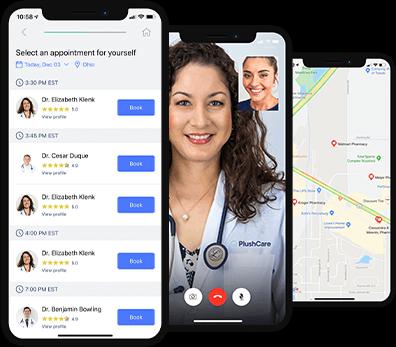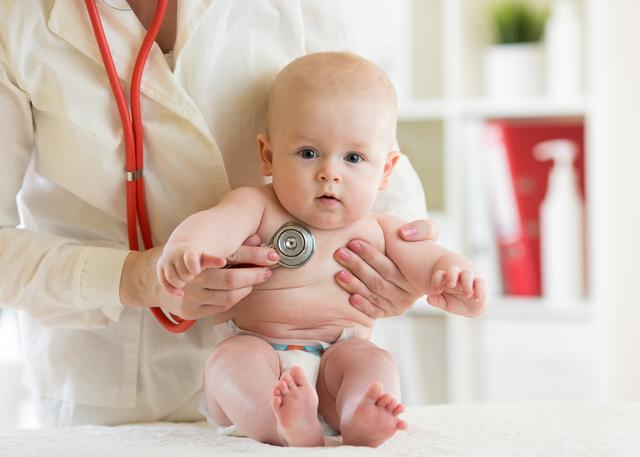Pink Eye in Babies & Toddlers
Approximately 1% of all primary care visits in the U.S. are for pink eye. Pink eye in toddlers is very common and generally not dangerous. Pink eye in newborns, on the other hand, can be a sign of a very serious infection and can lead to blindness if not treated. Newborns with pink eye in the first few weeks of life should see a pediatrician right away.
What is Pink Eye?
Pink eye, also known as conjunctivitis, is inflammation of the conjunctiva. The conjunctiva is the clear surface that lines the eyelid and eye. When the conjunctiva is inflamed, it turns from clear to red or pink. This pink color is where pink eye gets its name.
What Can Cause Pink Eye?
Pink eye can be either infectious or noninfectious. The infectious types are caused by either bacteria or viruses. The noninfectious types are classified as either allergic or nonallergic. Newborns, toddlers, children, and adults alike can get pink eye.
Pink Eye in Babies:
In newborns or babies during the first four weeks of life, pink eye can be caused by a serious bacterial infection such as chlamydia or gonorrhea. These infections are passed from the mother to the baby during delivery.
All babies born in a hospital receive antibiotic drops or ointment at the time of birth. These drops dramatically decrease the risk of these very serious infections.
Pink Eye in Toddlers:
Pink eye is very common in toddlers. It is most often caused by bacteria, but can also be viral, allergic, chemical, or inflammatory.
Bacterial: The most common cause of pink eye in toddlers is bacteria. The most common bacteria responsible for pink eye in children are Streptococcus pneumoniae, Moraxella catarrhalis, and Staphylococcus aureus. Bacterial pink eye may be associated with an ear infection.
Viral: The most common cause of viral pink eye in children is adenovirus. Viral pink eye is often associated with cold symptoms like runny nose, sore throat, and fever. It can be ongoing for two to three weeks but is typically worst during the first three to five days.
Allergic: Allergic pink eye is caused by an eye reaction to an allergen in the air. Common allergens include pollen, dust, mold, and pet dander. Allergic pink eye may be accompanied by symptoms of asthma or environmental allergies.
Other Noninfectious, Nonallergic Causes of Pink Eye:
Chemical pink eye: This is caused by a reaction to chemicals found in pool water, soap, shampoo, or another irritant.
Foreign body: Pink eye can be caused by a dust particle or another foreign body flying into the eye and causing irritation.
Kawasaki Disease: Pink eye is a symptom associated with this systemic inflammatory disease. Kawasaki disease most commonly occurs in children age 6-months to 5-years old.
Symptoms include fever for at least five days, plus four of the five following symptoms:
Pink eye
“Strawberry” (red and swollen) tongue OR red and cracked lips
Swollen lymph nodes in the neck
Red, painful, or swollen hands or feet OR peeling of fingers or toes
Red rash
Common Signs and Symptoms of Pink Eye:
Bacterial:
Redness
Milky white or green discharge
Waking up with eye “stuck shut”
Often occurs in both eyes
Can have an ear infection at the same time
Viral:
Redness
Watery
Often in one eye
Usually with runny nose or sore throat
Can have swollen lymph nodes in the neck
Allergic:
Redness
Itchiness
Watery
Sensitive to light
Foreign body sensation
Potential Complications of Pink Eye
Babies: Babies can develop severe complications including blindness or systemic infections such as sepsis (blood infection) or meningitis.
Toddlers: Depending on the type of pink eye, toddlers typically have few complications. Pink eye caused by Herpes Simplex Virus (HSV) is rare but can have serious side effect such as eye damage if not treated.
Diagnosing Pink Eye in Babies and Toddlers
To diagnose pink eye, your pediatrician will want to know:
What the eye looks like
If one or both eyes are involved
If the eyes are watery or have discharge
How long your toddler has had these symptoms
If they have fever, runny nose, or sore throat
If anyone else at home or daycare has similar symptoms
Treatment of Pink Eye in Toddlers
Most viral cases of conjunctivitis resolve without intervention. Treatment depends on the type of pink eye. A doctor can help distinguish what type of pink eye your toddler has.
Bacterial: Your doctor may prescribe antibiotic drops to help speed up recovery, however, they are not always necessary.
Viral: Cold compresses can sometimes provide symptom relief, but often toddlers are unhappy to sit still for such an intervention. Antibiotics will not help viral pink eye.
If your child has pink eye caused by HSV, they will need to be treated with antiviral medications. It is important to let your doctor know if your toddler has red vesicular lesions near the eye or mouth if they have pink eye.
Allergic and Chemical:
Avoidance of aggravating exposure (dust, pet dander, or pool water).
Lubricating eye drops may provide temporary relief from itchiness and irritation.
Your doctor may prescribe a topical or oral antihistamine medication to treat inflammation from an allergic reaction.
Preventing Pink Eye in Babies and Toddlers
The best way to prevent bacterial or viral pink eye is handwashing, especially after touching your toddlers eyes, mouth, or nose. If your baby or toddler is diagnosed with pink eye, it is a good idea to wash toys and blankets to prevent spread and re-infection.
When can my toddler go back to school after pink eye?
Pink eye, if bacterial or viral, is extremely contagious. Most physicians will advise patients to stay home until they are no longer having eye discharge. Some daycares or preschools will require topical antibiotic treatment for at least 24 hours prior to returning. If your daycare or preschool has this policy, you will need to see a pediatrician.

1
Book on our free mobile app or website.
Our doctors operate in all 50 states and same day appointments are available every 15 minutes.
2
See a doctor, get treatment and a prescription at your local pharmacy.
3
Use your health insurance just like you normally would to see your doctor.
When to Call Your Pediatrician for Pink Eye in Babies or Toddlers
Babies:
If your newborn has pink eye or fever, call your pediatrician as soon as possible.
Toddlers:
If your toddler has signs of bacterial pink eye, you should contact your pediatrician.
If your daycare will not allow them to return without treatment.
If your child has red vesicular lesions around or in their eye.
If your child is complaining of blurry vision or difficulty seeing.
If their pink eye is persistent and does not resolve.
Sarah Stewart, MD
Read more of our Pink Eye Series:
Sources:
PlushCare is dedicated to providing you with accurate and trustworthy health information.
Center For Disease Control and Prevention. Pink Eye. Accessed on July 02, 2019 at https://www.cdc.gov/features/conjunctivitis/index.html
Kids Health. Pink Eye (Conjunctivitis). Accessed on July 02, 2019 at https://kidshealth.org/en/parents/conjunctivitis.html
Cleveland Clinic. Conjunctivitis. Accessed on July 02, 2019 at https://my.clevelandclinic.org/health/diseases/8614-pink-eye-conjunctivitis



